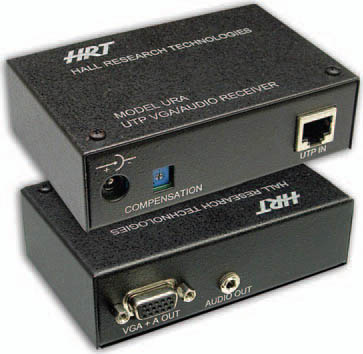Product Review : AV Over Category Cabling

- Structured cabling has always played a role in LANs and data infrastructure, but only in the last decade or so have AV signals been jumping on the "Cat" bandwagon. Traditionally, analog audio and video signals have required the use of expensive heavy-gauge shielded cabling. An entire industry of "exotic" cabling has evolved, claiming superior signal transmission performance from the use of these very high-end cables.
- Now, thanks to

an ever-expanding selection of signal conversion products for AV over twisted- pair cabling, it's easier than ever to use inexpensive "category" cabling to transmit high quality audio and video signals (see related article in this issue, "DVI/HDMI Signals over Twisted-Pair Cable," beginning on page 26).
UTP cabling was originally developed by the computer industry in the late 1970s for transmitting digital data over computer networks. Digital data signals are relatively forgiving and can tolerate considerable interference and degradation before affecting the integrity of the signal. More recently, UTP cable began to be used to carry analog video signals, which are much more demanding.

connectors for signal transmission. "Category" UTP cables are specified by TIA standards documents, and are constructed using four twisted pairs. In all standard cables, the twist rate (number of twists per inch) is different among the various pairs inside the cable. This is an intentional design feature of these cables since they were originally developed for LAN applications. The twist ratio difference cuts down on the crosstalk in bi-directional data communication. But for video signal transmission, this presents a challenge.
In AV, virtually all RGB or RGBHV video over UTP systems transmit each color component over its own dedicated twisted pair, therefore three pairs are used for the transmission of color (R,G, and B). The fourth pair can be used for other purposes such as phantom power, audio, data, serial port, keyboard/mouse, etc. Since the twist rates of each pair is different, each color component arrives at different times, causing skew errors.
How do you avoid skew? One way is to use so-called "skew-free cable," in which the length of each twisted pair is uniform, so the R,G,B signals arrive at the receiver simultaneously. The other way is to be sure that the system you use has skew-compensation circuitry that allows adjustment (delay) of various signal components according to the length of your specific cable run.
A daily selection of features, industry news, and analysis for tech managers. Sign up below.
The AVNetwork staff are storytellers focused on the professional audiovisual and technology industry. Their mission is to keep readers up-to-date on the latest AV/IT industry and product news, emerging trends, and inspiring installations.
